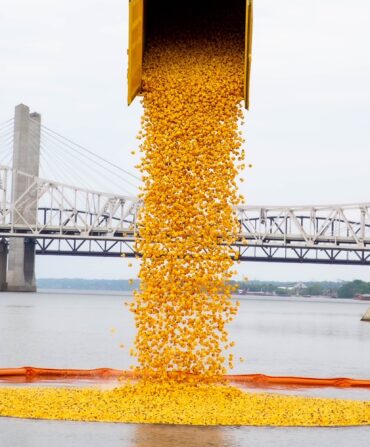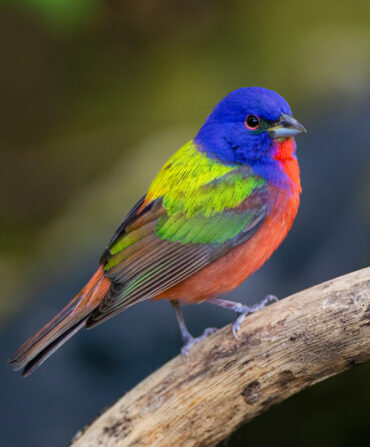This past weekend, during the Southeastern Wildlife Exposition (SEWE) in Charleston, South Carolina, curious attendees gathered to watch Mark McNair, a renowned decoy carver from coastal Virginia, shape blocks of wood into the beginnings of his next pieces of art. McNair began carving in the 1970s, and starting this Friday, a collection of his decoys will be among more than 650 lots crossing the block at the livestreamed Copley Winter Sale (February 24–25), an annual sporting art auction that has become known for setting decoy sales records. (Last year’s top sale, the Harmon Hollow Nantucket Curlew, sold for $228,000, doubling the previous world record for a Nantucket decoy.) But the auction offers a range of smaller-ticket items, too.

SEWE attendees strolled through an auction preview, perusing rare decoys by carvers including Maryland’s famed Ward brothers, striking black-and-white etchings by the artist Frank Benson, and a standout painting by Richard E. Bishop, Prairie Wings, which features mallards landing against a bright blue Arkansas sky. The mallard painting was part of the revered 1946 book of the same name, published by Ducks Unlimited, and a copy of the book is included with the painting. Below, take a peek at these and more highlights from the auction, which is available for telephone and online bidding.
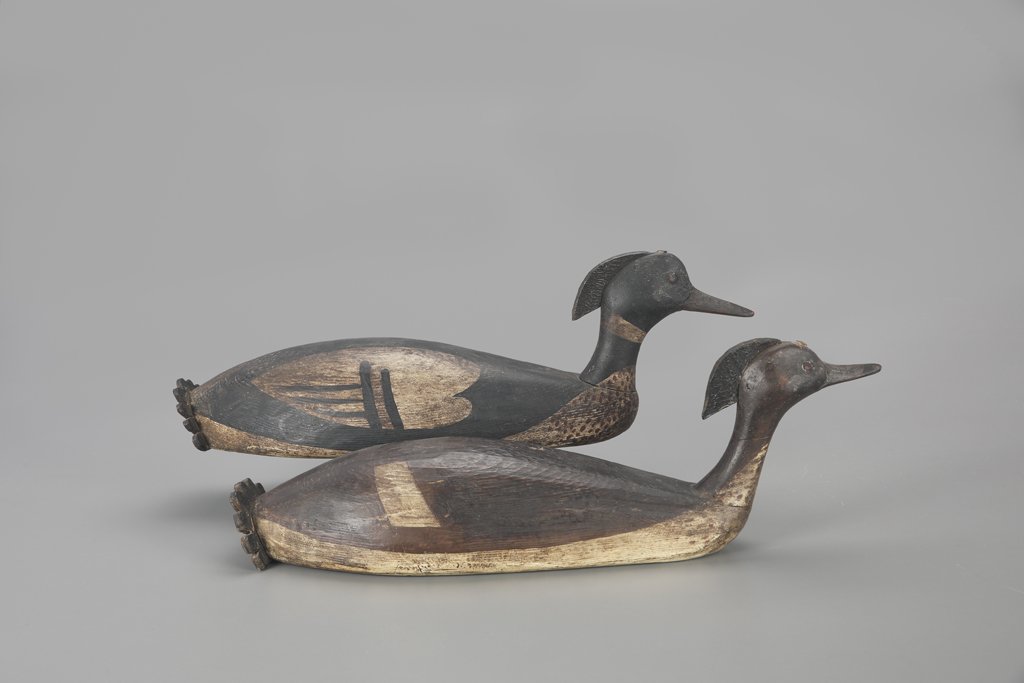
Early Merganser Pair, c. 1975, Mark S. McNair, Craddockville, Virginia. During McNair’s demonstration at SEWE, he explained how the shape of a merganser’s neck has long inspired him as an artist, and these are some of his first works.

Exceptional Mallard Hen, 1938, the Ward brothers, Crisfield, Maryland. “The Ward brothers were known to have made very few early mallards,” the auction catalog explains. “It was not until the 1940s that mallard populations began to proliferate along the Atlantic Flyway. For this reason, mallard decoys by famous East Coast carvers, like Joseph Lincoln (1859-1938) and Harry V. Shourds (1861-1920), are almost non-existent. Beyond the overall rarity of early Ward mallards, the form, paint, and condition of this decoy place it as second to none among the species by the Wards or any decoy maker.”
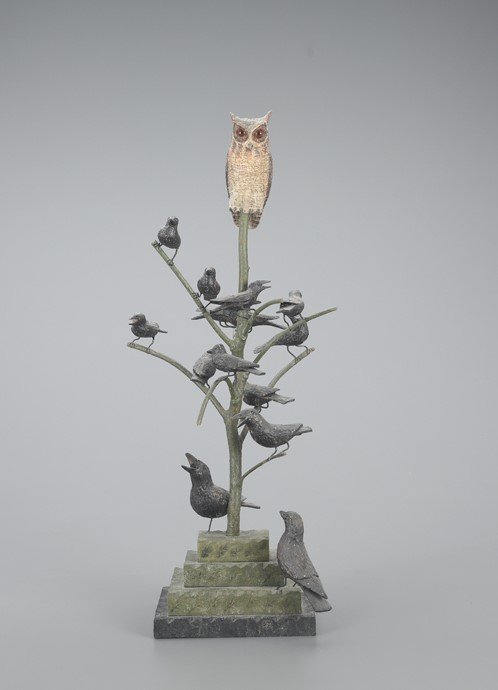
The auction contains traditional decoys, including a wigeon, by the living carver and folk artist Frank S. Finney of Capeville, Virginia. But Copley owner Stephen B. O’Brien Jr. points out Finney’s whimsical sculpture Owl and Crow Tree as a surprise hit. “Finney’s works often tell stories,” he says. “This particular carving speaks to the unusual relationship between a great-horned owl and a murder of crows. Both the owl and crow vie for the same turf in the forest, and Finney seems to delight in the allegorical tale of these two enemies.”
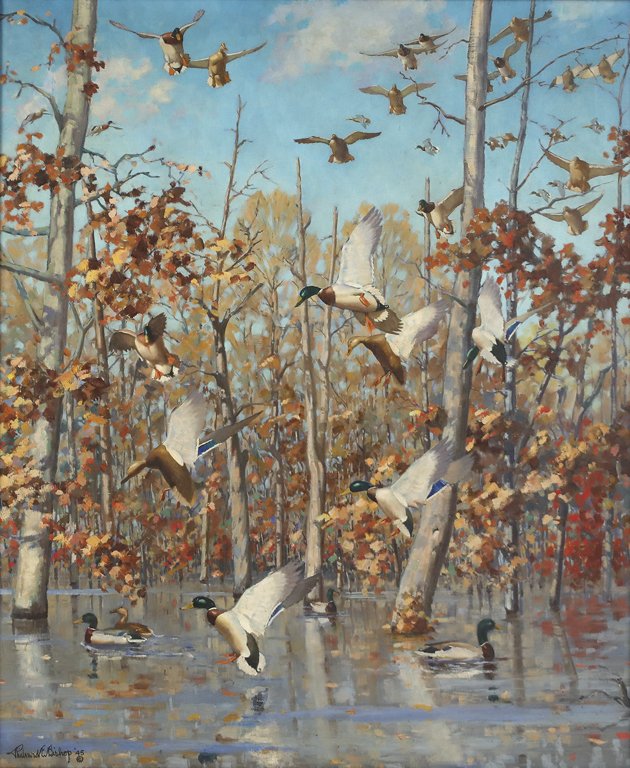
Prairie Wings, 1945, oil on canvas, Richard E. Bishop, Syracuse, New York. An edition of the book Prairie Wings by Edgar M. Queeny, published by Ducks Unlimited in 1946, accompanies the lot. As the catalog explains, “[Bishop] studied the landing patterns of birds over Wingmead, [Queeny’s] 14,000-acre property in Arkansas, which had three named green tree reservoirs: Wingmead, Paddlefoot, and Greenwood. Queeny was an active patron of Bishop’s and partnered with the artist for the many illustrations throughout the book, including the color frontispiece.”
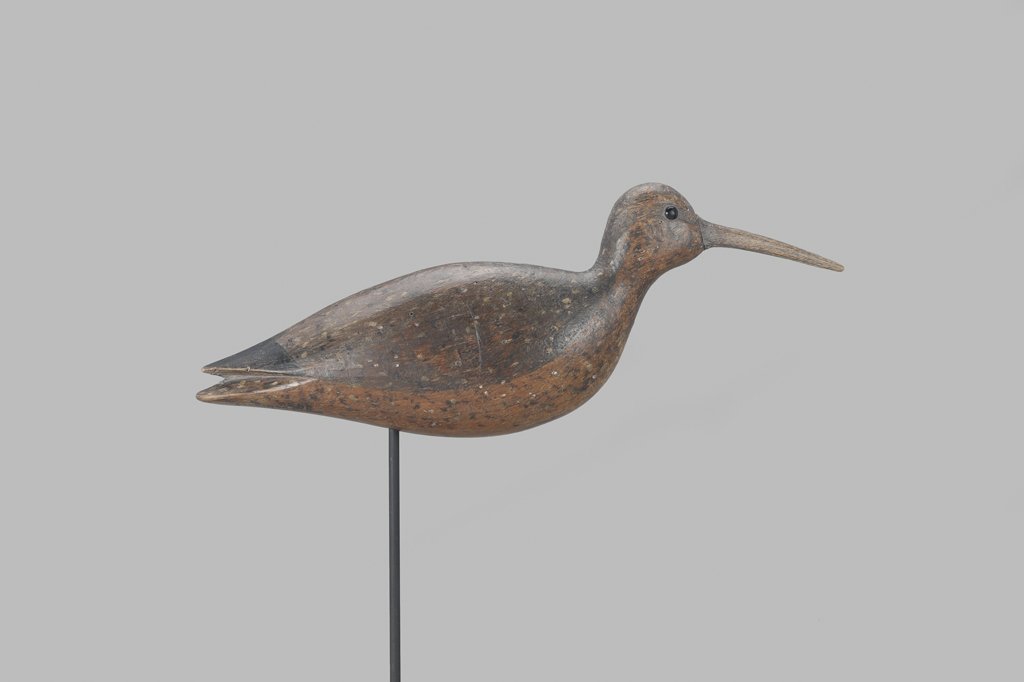
The Harmon Running Cobb Curlew, Nathan F. Cobb Jr. (1825–1905), Cobb Island, Virginia. “Every Nathan Cobb decoy had its own natural pose,” wrote William J. Mackey Jr. in American Bird Decoys. “Even his Hudsonian Curlews seemed to run, feed, and walk.”
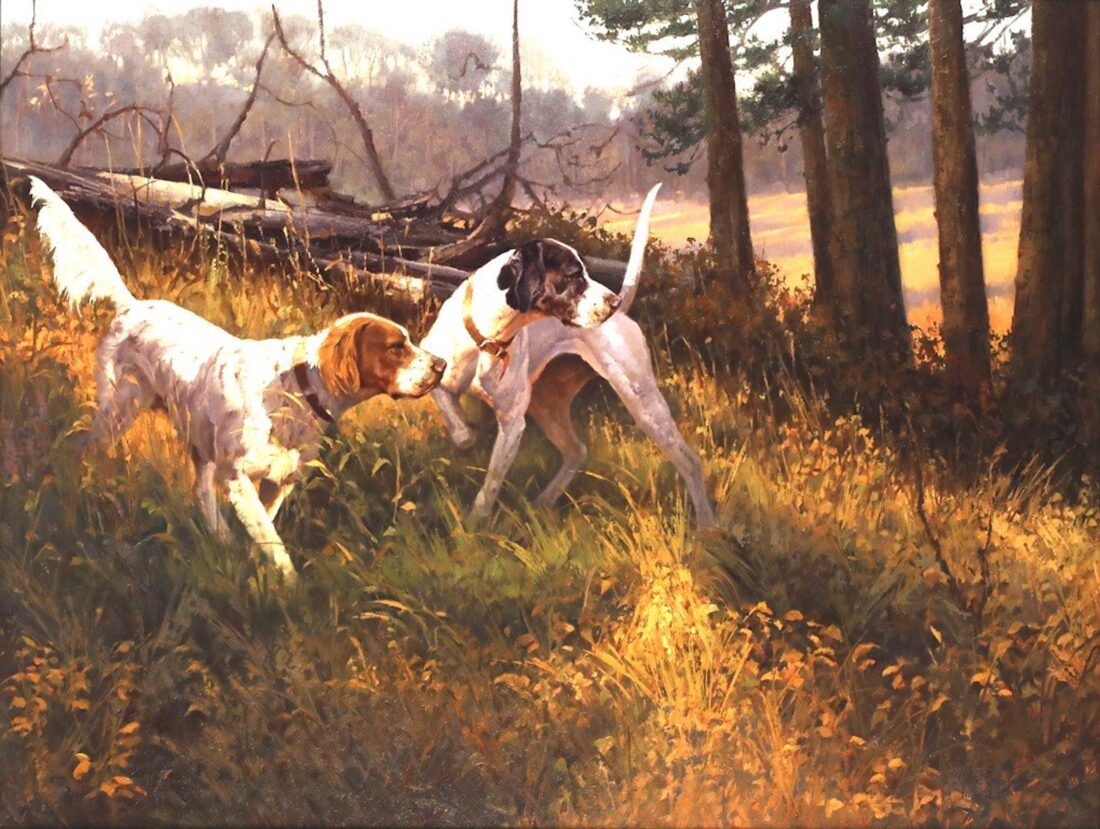
Scent on the Side, oil on canvas, Julie Jeppsen, a contemporary self-taught artist who lives in Montana. As the catalog describes, “Jeppsen took extra care rendering her own two dogs in this bright, vibrant sporting work.”
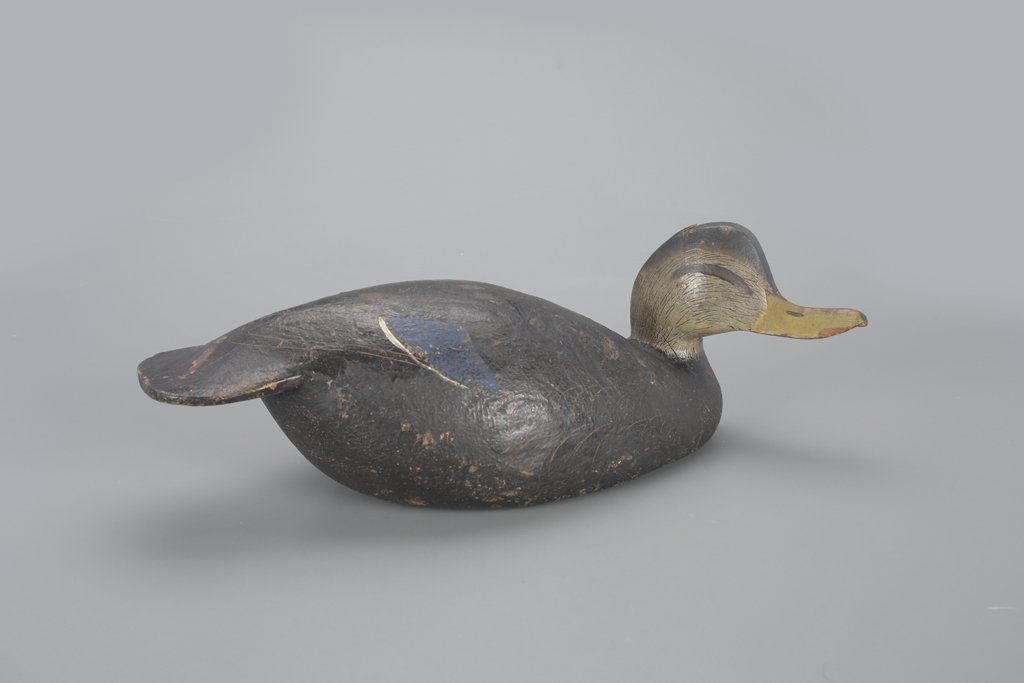
Early Humpback Black Duck, the Ward Brothers, Crisfield, Maryland. “Stephen W. Ward (1895–1976) and his brother Lemuel Travis Ward (1896–1984) were by far the most prominent Chesapeake Bay carvers of the twentieth century and among the greatest and most influential bird carvers of all time,” wrote Robert Shaw in Bird Decoys of North America. “The brothers worked closely together throughout their lives, combining the complementary talents of Steve’s hand carving and Lem’s brushwork to create works of extraordinary grace and realism.”
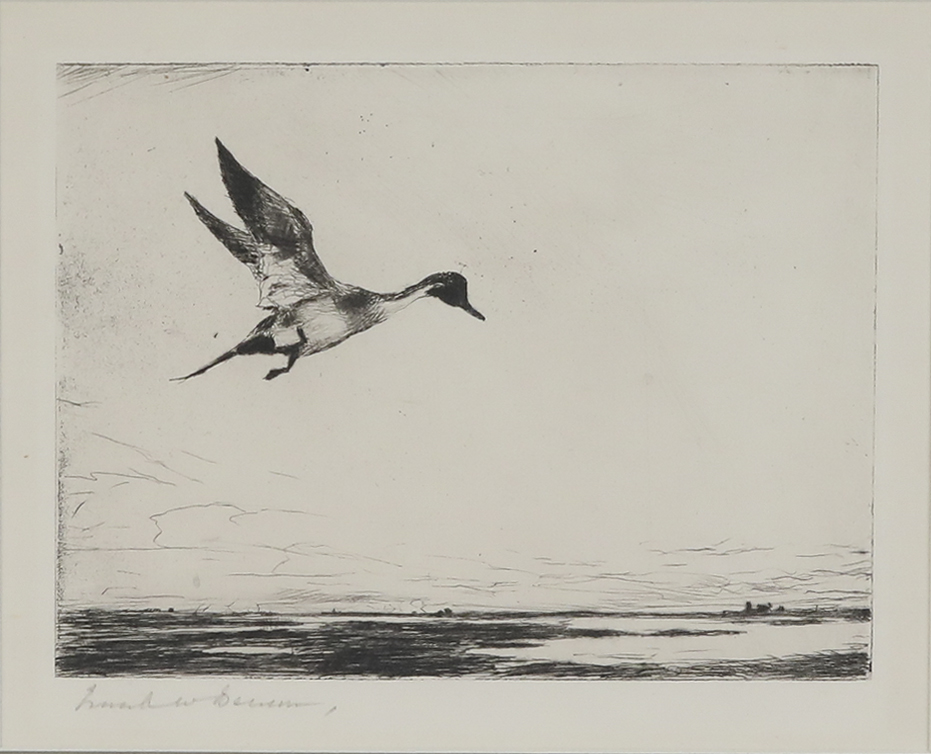
A handful of Frank Benson (1862–1951) etchings will cross the block, including this Lone Pintail, 1930. The Massachusetts-born artist worked across mediums, including oil and watercolor, but his etchings are some of his most recognizable works to sporting art collectors.

Double Sailor Valentine, by Harry Bextel, New Haven, Connecticut. “A handcrafted sailor’s seashell valentine in a double octagonal display case composed of mahogany and glass,” the catalog describes. “Originally made in the late nineteenth century, these valentines were made at sea, brought home from a sailor’s voyage, and given to a loved one.”
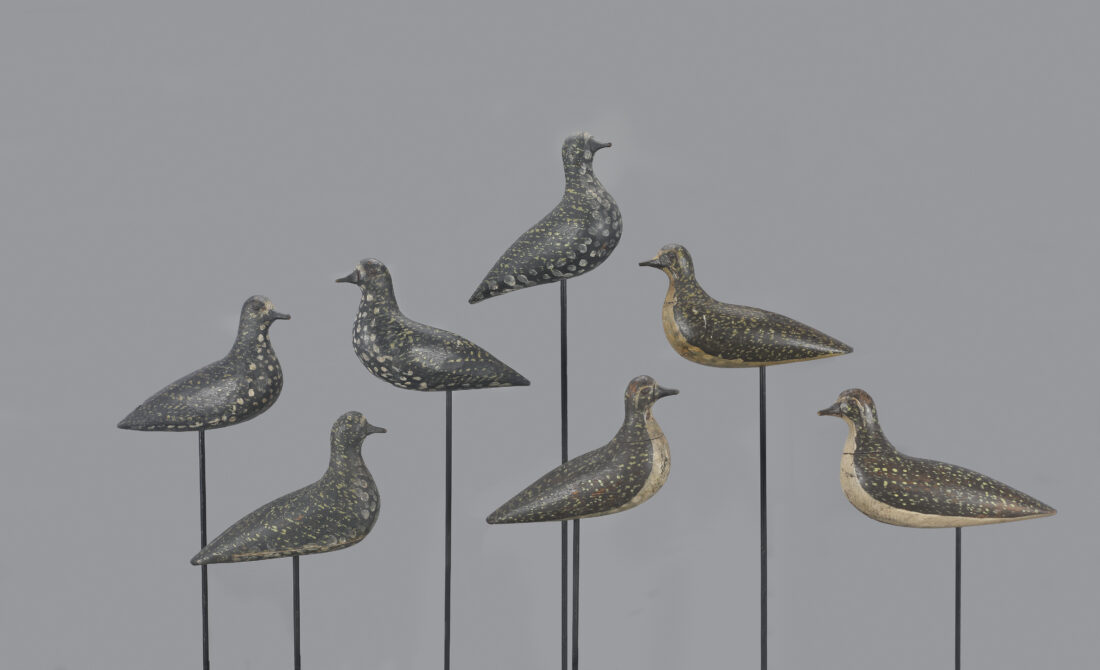
Rig of Seven Golden Plover, Coffin Family, Nantucket, Massachussets, c. 1870. “This has been an exciting auction to catalog and introduce to the marketplace, especially due to several important collections which have been held privately until now, such as the Stephen O’Brien Sr. Collection of Nantucket decoys,” Copley’s decoy specialist Colin McNair says. “Over the years, many rigs were often whittled down into singles or pairs.” This rig is a rare grouping.



